10 Tips for Preparing Vehicle Electrical Systems for Winter
 When temperatures plunge, electrical systems in work, construction, service, and emergency vehicles come under intense strain. Batteries lose efficiency, alternators face increased demand, and wiring harnesses are exposed to moisture, ice, and road chemicals. For fleets, these conditions can lead to costly downtime and safety risks if vehicles are not properly prepared.
When temperatures plunge, electrical systems in work, construction, service, and emergency vehicles come under intense strain. Batteries lose efficiency, alternators face increased demand, and wiring harnesses are exposed to moisture, ice, and road chemicals. For fleets, these conditions can lead to costly downtime and safety risks if vehicles are not properly prepared.
Here are ten practical steps that can help ensure reliable electrical performance throughout the cold season.
1. Test and Replace Batteries Proactively
Batteries lose about 30–40% of their cranking power at 32°F (0°C) and up to 60% at 0°F (-18°C). Before winter, every fleet battery should be load-tested rather than checked for voltage alone. Look for CCA (Cold Cranking Amps) ratings that exceed the minimum requirement for your engines—many fleets standardize at 750–1,000 CCA for heavy-duty vehicles.
If a battery tests at less than 80% of rated capacity, replacement is recommended. Cleaning terminals and using anti-corrosion spray or grease helps maintain conductivity, and applying protective covers reduces the risk of moisture intrusion.
Lithium batteries outperform lead-acid batteries in cold conditions, maintaining higher voltage and efficiency. While both lose capacity as temperatures drop, lithium batteries retain significantly more performance than lead-acid types.
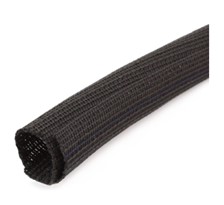
2. Inspect and Reinforce Wiring Harnesses
Cold weather increases the brittleness of wire insulation, making it more prone to cracking. Add road salts and moisture, and corrosion can quickly migrate through the harness.
- Inspect wiring harnesses for abrasion, cracked insulation, or loose connectors.
- Cover any exposed wires with self-closing wrap, heat shrink tubing, or split loom.
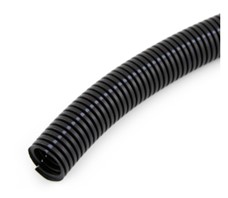
- Use IP67/IP68-rated connectors in high-moisture zones.
- Where possible, route wires away from areas prone to ice buildup and slush.
3. Verify Alternator Output Under Load
Winter loads—heated mirrors, blowers, defrosters, work lights—place a heavy draw on alternators. Measure alternator output at idle with all accessories on. Output should be at least 90% of rated amperage; anything less may indicate worn brushes or failing diodes.
4. Strengthen Grounds and Chassis Connections
Many electrical faults in winter can be traced to poor grounds. Cold temperatures cause metal contraction, loosening fasteners and reducing conductivity.
- Use braided copper ground straps for flexibility.
- Ensure all grounds are bonded to bare metal with conductive paste.
- Apply zinc-based anti-corrosion spray or conductive grease to protect bare connections.
- Torque connections to manufacturer spec to prevent loosening in vibration-heavy work environments.
You can enhance grounding by incorporating low-resistance, centralized connection points for multiple ground wires. Power posts and junction blocks, for example, can be used to allow secure, consolidated grounding paths; battery jumper terminals and feeder studs ensure direct, high-current connections to the chassis or ground bus.
5. Upgrade and Test Lighting Systems
Reduced daylight hours and blowing snow increase reliance on auxiliary and safety lighting. LEDs are preferred in winter because they:
- Draw 40–70% less current than halogen.
- Deliver higher lumen output per watt.
- Operate consistently down to -40°C.
Before winter, measure voltage drop across lighting circuits. A drop of more than 0.5V may indicate corroded connectors or undersized wiring. Replace cloudy polycarbonate lenses, which can reduce brightness by up to 30% in snow and ice.
6. Seal Against Moisture Intrusion 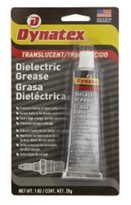
Electrical failures often start with moisture. As vehicles go through freeze-thaw cycles, condensation infiltrates connectors and enclosures.
- Use weatherproof junction boxes for fuse and relay panels.
- Apply dielectric grease on exposed contacts.
- Use rubber battery boots (example below, right) to protect battery terminals.
- Use caps on critical connectors that may be subjected to frequent plugging and unplugging, particularly if they are near wheel wells and undercarriages.
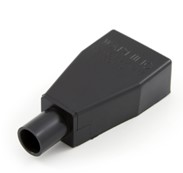
These steps are especially critical for vehicles with PTO-driven equipment or auxiliary electrical loads, where additional harnesses increase the number of potential leak points.
7. Reduce Mechanical Load With Cold-Weather Fluids
Cold, viscous lubricants can double or triple the torque required to crank an engine. That means higher current draw from starters and batteries. Switching to manufacturer-approved low-temperature engine oil (e.g., 5W-40 synthetic instead of 15W-40) can reduce cranking amperage by up to 25%, easing the load on the electrical system.
Similarly, ensure hydraulic fluids for work attachments are rated for low-temperature service to prevent strain on electric solenoids and pumps.
8. Test Auxiliary Electrical Systems
Auxiliary equipment often draws as much or more current as the base vehicle systems. Hydraulic pumps, winches, radios, and inverters should be tested at full load.
- Use clamp-on ammeters to verify actual current draw.
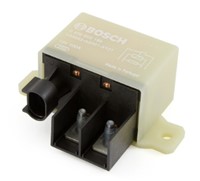
- Verify that wire gauge provides a 20–30% capacity margin over expected current draw, while fuses remain correctly sized to protect the circuit.
- Replace undersized relays with high-cycle, weather-sealed versions designed for heavy-duty use. Example at right: A 100-amp Bosch power relay, built to endure extreme environments.
In cold weather, marginal wiring or fusing will fail faster as components draw more current on startup.
9. Stock and Standardize Spares
Field repairs in winter conditions are slow and hazardous. Fleet shops should stock:
- Fuses and relays in all standard amperages.
- Weather-sealed crimp connectors.
- LED replacement lamps for common housings.
- Heavy-duty jumper cables or lithium battery boosters rated for -20°F (-29°C) operation.
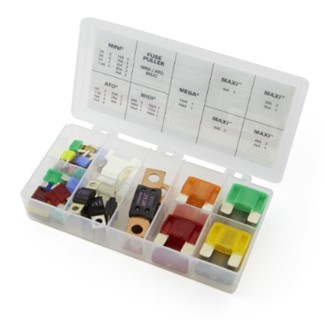
Standardizing components across the fleet simplifies stocking and reduces downtime when failures occur.
Shown at right: A commercial & fleet emergency fuse kit from Littelfuse. Federal Motor Carrier Safety Regulations require all power units in commercial service to carry safety equipment such as spare fuses.
10. Operator Training and Cold-Start Protocols
Even the most robust electrical systems fail if operators aren’t trained. Teach staff to:
- Monitor voltmeter readings on startup (low voltage may indicate alternator issues).
- Report slow cranking immediately.
- Keep battery terminals free of ice and snow buildup.
- Use block heaters or battery warmers when vehicles sit outside overnight in sub-zero conditions.
Establishing a cold-weather startup checklist ensures consistency across the fleet.
Designing Electrical Systems for Cold-Weather Reliability
While maintenance is essential, the best approach is to specify components up front that are engineered for winter conditions. For new vehicle builds or major retrofits, consider: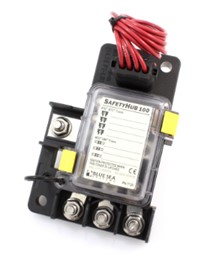
- High-CCA AGM or lithium batteries with superior low-temperature performance.
- Heavy-duty alternators (200A+) sized for worst-case accessory loads.
- XLPE or TPE insulated wire with abrasion- and cold-resistant jackets.
- Sealed, IP67/IP68-rated connectors and fuse blocks. (Example at right: A SafetyHub fuse block from Blue Sea Systems).
- LED work and safety lighting with heated lenses where snow accumulation is common.
- Integrated block heaters, battery warmers, and auxiliary heaters to reduce cold-start load.
By building systems with cold resistance in mind, fleets reduce lifetime maintenance costs, extend component service intervals, and ensure uptime even in extreme conditions.
Conclusion
Cold weather exposes every weakness in a vehicle’s electrical system. Batteries underperform, alternators strain, and corrosion accelerates. By applying a technical, preventive approach—testing, upgrading, sealing, and training—fleet managers can keep vehicles ready for duty when they’re needed most.
The key isn’t just surviving the winter but building systems that thrive in it. By specifying the right components from the start, fleets gain a long-term advantage: reliable operation no matter how low the thermometer drops.
Subscribe Now
Subscribe and be the first to know when new articles are published.
